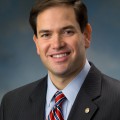 The median salary for United States higher-education faculty members ticked up in 2012, according to a newly released report from the College and University Professional Association for Human Resources (CUPA-HR).
The median salary for United States higher-education faculty members ticked up in 2012, according to a newly released report from the College and University Professional Association for Human Resources (CUPA-HR).
The results showed a 1.9 percent median bump in base higher-education salaries for all faculty members during the 2011–2012 academic year, with private institutions seeing higher gains than their public counterparts.
As the report notes, the 1.9 percent increase doesn’t keep pace with inflation, but it’s an improvement over the 1.1 percent increase from the 2010–2011 school year, and certainly over recession years that saw “neutral or negative” salary increases.
“Hopefully the economic recovery will continue so that public and private institutions can provide increases for the 2012–13 academic year that meet or exceed the rate of inflation,” said Andy Brantley, CUPA-HR President and CEO, in the press release.
There were also considerable variations among different types of institutions. Median increases in overall faculty salary were 1 to 2 percentage points higher at private institutions compared to public ones, a difference that has remained consistent the past three years. The three disciplines with the highest average salaries are consistent across all faculty ranks and have remained unchanged over the past four years. The highest salaries go to legal profession and studies; engineering; and business, management, marketing and related support services.
Legal professions and engineering also tend to have the highest percentages of full professors compared to other disciplines, the study notes, regardless of whether the institution is public or private. In addition, three of the disciplines with the lowest percentage of full professors are the same across both public and private institutions: family and consumer sciences, library science, and health professions and related programs.
The largest group of participants in the study, at about 44 percent, were in master’s degree programs. Baccalaureate colleges had closer to 30 percent of the survey share, while doctoral institutions accounted for nearly 20 percent of the schools participating in the study.
While a faculty member’s discipline and rank has a big impact on salary, other reports indicate there is a notable difference between the salaries of professors who have tenure or continue to reside at the same university and those who have started in new schools or positions. According to the American Association of University Professors (ASUP), a mid-2012 survey of nearly 1,300 professors indicated that the average salary for full-time professors rose 1.8 percent between 2010 and 2011. However, the association’s figures for professors that remained with the same institution saw a 2.9 percent average increase in revenue.
However, data for a large percentage of university faculty is hard to calculate. Full-time non-tenure-track, part-time faculty and graduate student employees often make up more than 75 percent of the total instructional staff, the AAUP report said, but compensation data is hard to come by in part because of differences in how these teachers are compensated.
[cf]skyword_tracking_tag[/cf]






No Comment